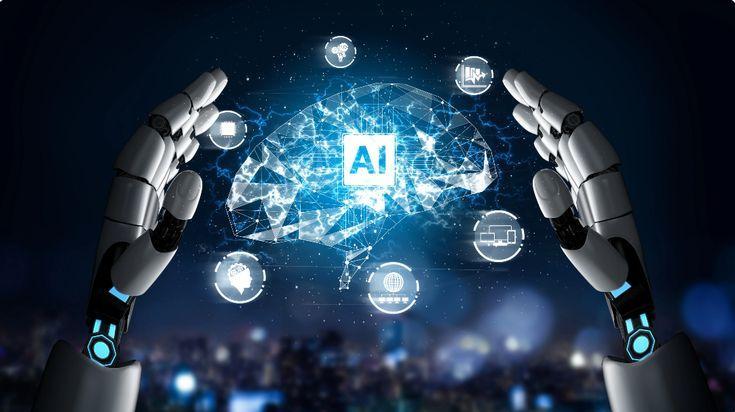Artificial Intelligence (AI) has revolutionized numerous industries, from healthcare to finance, entertainment, and beyond. Within the realm of AI, one crucial aspect that often stands out is resolution. Resolution plays a pivotal role in determining the quality and precision of AI algorithms, impacting their performance and effectiveness across various applications. In this comprehensive guide, we delve into the intricacies of resolution in AI, exploring its significance, implications, and applications.
Defining Resolution in AI
Resolution in AI refers to the level of detail or granularity at which an AI system operates. It essentially reflects the precision with which the system can perceive, analyze, and respond to data inputs. In simpler terms, resolution determines the clarity and accuracy of outcomes produced by AI algorithms. It encompasses various dimensions, including spatial, temporal, spectral, and more, depending on the nature of the data and tasks involved.
Spatial Resolution
Spatial resolution pertains to the level of detail in spatial dimensions, such as images or geographical data. Higher spatial resolution implies finer details, enabling AI systems to discern intricate patterns and features within images or maps. This is particularly critical in applications like satellite imagery analysis, medical imaging, object detection, and facial recognition, where precise identification and characterization are paramount.
Temporal Resolution
Temporal resolution focuses on the accuracy and frequency of data updates over time. It determines how quickly an AI system can process and respond to changes in dynamic environments or evolving datasets. Applications requiring real-time monitoring, predictive analytics, or trend analysis rely heavily on high temporal resolution to capture fleeting insights and make timely decisions.
Spectral Resolution
Spectral resolution refers to the ability to differentiate between different wavelengths or bands within the electromagnetic spectrum. It plays a vital role in fields like remote sensing, environmental monitoring, and spectroscopy, where distinct spectral signatures hold valuable information about materials, compounds, or phenomena. Higher spectral resolution enables finer spectral discrimination, facilitating more precise analyses and classifications.
Importance of High Resolution in AI
The importance of high resolution in AI cannot be overstated, as it directly influences the quality, accuracy, and utility of AI-driven solutions across diverse domains. Here are some key reasons why resolution matters in AI:
Enhanced Precision and Accuracy
High resolution enables AI systems to capture finer details and nuances in data, leading to more precise analyses, predictions, and decisions. Whether it’s detecting anomalies in medical images, identifying objects in autonomous vehicles, or classifying patterns in financial data, higher resolution translates to greater accuracy and reliability.
Improved Performance and Efficiency
By operating at higher resolutions, AI algorithms can achieve superior performance and efficiency in various tasks. They can extract more meaningful insights from complex datasets, optimize resource utilization, and streamline processes with greater effectiveness. This not only enhances productivity but also drives innovation and competitiveness in AI-driven industries.
Expanded Applications and Capabilities
With increasing resolution, AI systems can tackle a broader range of applications and challenges that were previously beyond their reach. From advanced robotics and natural language processing to personalized recommendations and autonomous systems, higher resolution unlocks new possibilities for innovation and growth in AI technology.
Enhanced User Experience
In consumer-facing applications like virtual assistants, augmented reality, and recommendation systems, high resolution translates to a more immersive and engaging user experience. It enables AI to understand and respond to user inputs with greater context and relevance, fostering deeper interactions and satisfaction among users.
Applications of Resolution in AI
The impact of resolution in AI extends across a multitude of industries and use cases, driving innovation and transformation in various domains. Here are some notable applications where resolution plays a crucial role:
Healthcare
In medical imaging, such as MRI, CT scans, and microscopy, high spatial resolution is essential for accurate diagnosis and treatment planning. It allows healthcare professionals to visualize and analyze anatomical structures and pathological conditions with exceptional clarity and precision, leading to better patient outcomes and healthcare delivery.
Autonomous Vehicles
In autonomous vehicles and robotics, high-resolution sensors, such as LiDAR and cameras, enable precise navigation, object detection, and environment perception. This ensures safe and efficient operation in diverse driving conditions, reducing the risk of accidents and improving overall road safety.
Remote Sensing
In environmental monitoring, agriculture, and urban planning, high-resolution satellite imagery provides valuable insights into land use, vegetation health, and natural resource management. It supports decision-making processes, disaster response efforts, and sustainable development initiatives with accurate, up-to-date information.
Finance and Business Analytics
In finance and business analytics, high temporal resolution facilitates real-time trading, risk management, and market forecasting. It allows analysts and traders to react swiftly to market changes, identify emerging trends, and optimize investment strategies for better returns and portfolio performance.
Conclusion
Resolution stands as a cornerstone of AI, shaping its capabilities, performance, and impact across diverse applications and industries. From spatial and temporal precision to spectral discrimination, resolution influences every aspect of AI-driven solutions, driving innovation, efficiency, and user experience. As AI continues to advance, harnessing high resolution will be paramount in unlocking new frontiers of possibility and driving positive change in the world.





